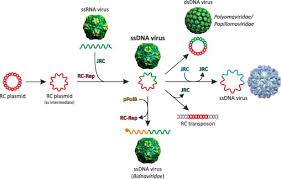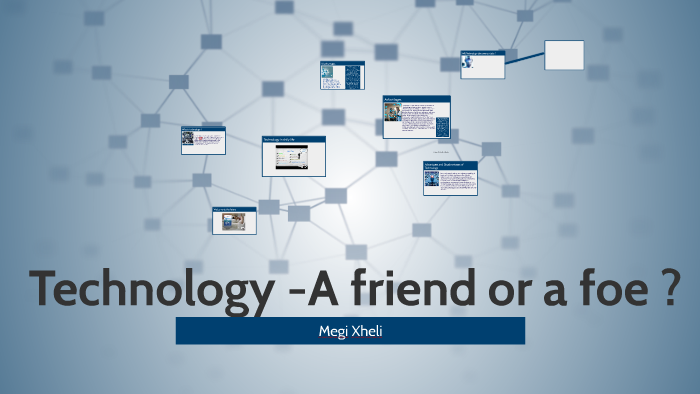
Introduction: The Language of Connection
In an era where globalization governs trade, diplomacy, education, and even entertainment, the ability to communicate beyond one’s native tongue is not a luxury—it’s a necessity. This demand for understanding across languages has given rise to a sophisticated discipline known as çeviviri—a Turkish term for translation that blends precision, cultural awareness, and linguistic mastery. However, çeviviri is more than just converting words; it is the bridge between ideologies, societies, and individuals. From ancient texts that shaped civilizations to real-time interpretations in international summits, çeviviri plays an unsung but indispensable role in connecting humanity. Yet, how well do we truly understand its value, evolution, and challenges in the digital age? This article dives deep into the transformative journey of çeviviri and why it has become more relevant than ever before.
The Origins and Evolution of Çeviviri
Translation is as old as language itself. The need to interpret another’s speech likely existed since the first interaction between people of differing tongues. But çeviviri as a structured concept has evolved massively. Ancient scholars from Mesopotamia, Egypt, and Greece practiced translation for knowledge transfer, preserving important scientific and religious manuscripts. During the Islamic Golden Age, Arabic translators were pivotal in transferring Greek and Roman knowledge to the world, often adding their interpretations and enhancing the original texts. The Renaissance saw a further explosion in translation activity across Europe, culminating in literary and philosophical revolutions. Today, çeviviri encompasses not just literature, but law, medicine, tech, and more—demanding specialized skills and deep cultural understanding.

The Cultural Nuance Behind Translation
Translation is never a simple word-for-word act. True çeviviri captures tone, sentiment, context, and nuance. Idioms, jokes, historical references, and even body language often vary between cultures, making literal translation ineffective or even offensive. For instance, a phrase like “it’s raining cats and dogs” would be incomprehensible if directly translated into Turkish. Instead, çeviviri seeks cultural equivalency—a method where the intended meaning is preserved, even if the wording changes. This delicate dance of fidelity and flexibility is what separates machine-generated gibberish from masterfully crafted translations.
Challenges Faced in Professional Çeviviri
While the demand for çeviviri is at an all-time high, so are the challenges facing translators. Accuracy, deadlines, confidentiality, and subject expertise are only the beginning. Misinterpretations can lead to diplomatic incidents, financial losses, or life-threatening errors in medical translations. Furthermore, the emotional burden of translating traumatic content—such as refugee testimonies or war reports—takes a psychological toll. With increasing reliance on artificial intelligence, human translators must also adapt, learning to work alongside technology while preserving the irreplaceable human touch that machines often miss.
Technology’s Impact: Friend or Foe?
There’s no denying that technology has revolutionized the çeviviri landscape. Tools like Google Translate, DeepL, and AI-driven platforms now offer rapid, accessible translation services to the masses. However, speed often comes at the cost of context and depth. While machines are getting better, they lack emotional intelligence and cultural insight. That said, many professionals now use these tools to assist, not replace, their work—speeding up routine tasks and focusing their energies on high-stakes content. The best çeviviri today is often a hybrid of machine efficiency and human intuition.

Çeviviri in Diplomacy and Global Politics
Imagine a global summit where every leader speaks a different language. Without çeviviri, discussions would collapse into chaos. Diplomacy depends heavily on skilled interpreters and translators who can swiftly and accurately convey meaning. A slight misinterpretation in political jargon can cause rifts between nations. During negotiations, every word carries weight, and the translator becomes a silent architect of global peace or conflict. This is why governments invest heavily in training expert çeviviri professionals and often employ them in sensitive, high-stakes roles.
Economic Relevance: Global Markets Need Global Words
In today’s global economy, a product is only as good as its market reach. Whether it’s a mobile app, luxury brand, or software-as-a-service, the need to localize content is critical. Çeviviri ensures that a company’s messaging resonates with its target audience, respecting local language, etiquette, and purchasing behavior. Poor translations have caused international marketing disasters—such as slogans that accidentally insult instead of impress. Professional çeviviri goes beyond language; it’s about understanding the psyche of a foreign customer.
Educational Access Through Çeviviri
Millions of people around the world access knowledge thanks to çeviviri. From translating academic journals to offering subtitles in online courses, çeviviri breaks down barriers to education. Students in remote areas can learn from top global universities, while researchers can collaborate across continents. Moreover, multilingual education fosters inclusion and empathy, making students more globally aware. The role of çeviviri in academia is not just practical; it is profoundly transformative.
Literary Translation: Art Beyond Borders
Some of the world’s greatest literature owes its global fame to çeviviri. Imagine a world where Dostoevsky, Rumi, Gabriel García Márquez, or Orhan Pamuk were never translated. Literary translation is a unique art that balances poetic voice, rhythm, and cultural undertones. Translators of fiction and poetry are co-creators—interpreting metaphors, capturing style, and breathing life into another’s vision. Great çeviviri in literature brings worlds together, allowing readers to explore lives and cultures far removed from their own.
Çeviviri in Crisis and Humanitarian Aid
In disaster zones, war areas, or refugee camps, çeviviri saves lives. Aid workers rely on interpreters to understand the needs of victims, to coordinate rescue missions, and to provide psychological support. Miscommunication in such high-stress environments can be fatal. Moreover, legal translators ensure that asylum seekers can tell their stories clearly, often determining the outcome of their fate. Here, çeviviri isn’t just helpful—it’s lifesaving.
Healthcare Translation: A Matter of Life and Death
Medical çeviviri is one of the most sensitive and vital areas of translation. Patients must accurately describe symptoms, understand diagnoses, and follow complex treatment instructions. Translators in hospitals must not only be fluent in medical terminology but also empathetic and ethical. They often serve as emotional anchors, helping patients feel seen and heard in vulnerable moments. A misstep here isn’t just a mistake—it can cost lives.
Legal Translation and Justice Accessibility
Law is language, and clarity is paramount. Legal çeviviri ensures fairness and access to justice. Whether it’s translating contracts, court proceedings, or immigration documents, the translator must maintain precision and impartiality. Legal language is notoriously dense and varies between jurisdictions, requiring specialized training. The stakes are high: a mistranslated clause can void a contract or reverse a court ruling. Thus, legal çeviviri is both a legal and moral responsibility.
5 Key Roles of Çeviviri in Modern Society
- 🌐 Global Connectivity: Enables communication in politics, commerce, and technology.
- 📚 Educational Access: Bridges academic research and learning resources worldwide.
- 💼 Economic Growth: Helps businesses expand into new linguistic markets.
- ⚖️ Social Justice: Ensures fair legal and healthcare communication.
- 📖 Cultural Preservation: Shares literature, art, and stories across borders.
Training and Certification in Çeviviri
Becoming a çeviviri professional is not merely about being bilingual. It requires formal training, certifications, and often specialization in fields like law, medicine, or literature. Institutions around the world offer diplomas and degrees in translation studies, where students learn about ethics, techniques, software tools, and linguistic theory. Continuous development is essential, as language and cultural references evolve constantly. The best çeviviri experts are lifelong learners, always refining their art and adapting to new global challenges.
The Human Side of Çeviviri
Behind every translated novel, court document, or medical report is a human being making nuanced choices. Translators are cultural ambassadors, advocates, and silent collaborators in every international project. Their work often goes unnoticed, but without them, international collaboration would stall, and much of the world’s knowledge would remain trapped behind language walls. As machines grow smarter, the human touch in çeviviri—the empathy, intuition, and deep cultural connection—remains irreplaceable.
Conclusion: Çeviviri as the Thread of Global Unity
In an increasingly fragmented world, çeviviri is the invisible thread weaving people, ideas, and cultures together. It is the quiet force behind peace talks, global commerce, cultural exchange, and education. As we advance technologically and grow closer as a global community, the importance of çeviviri will only deepen. This field demands respect, investment, and recognition—not just for its technical demands, but for its vital contribution to understanding and unity. The future belongs to those who can not only speak multiple languages, but translate meaning, emotion, and humanity across borders.
FAQs:
1. What is the difference between çeviviri and regular translation?
Çeviviri implies a culturally sensitive, context-rich form of translation that goes beyond literal language conversion. It captures deeper meaning and is often used in professional, legal, or diplomatic settings.
2. Can AI fully replace human çeviviri?
While AI tools assist and speed up translation, they still lack emotional intelligence and cultural nuance. Human translators are essential for accuracy, creativity, and complex subject areas.
3. How can I become a certified çeviviri professional?
You can pursue translation studies at universities or specialized institutions, and seek certification from recognized bodies such as ATA (American Translators Association) or CIOL (Chartered Institute of Linguists), depending on your country.
Also Read This: Addlee Driver Portal: Empowering Drivers with Seamless Fleet Management



